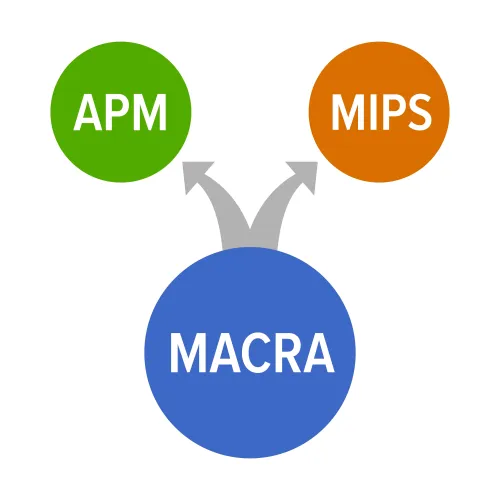Avoid These 10 Mistakes When Submitting Claims to Medicare
Hint: Part B MACs even have a favorite font for your claim forms. When it comes to submitting clean claims, even a misplaced period can sink your submissions and eliminate your chances of collecting appropriate reimbursement. That was the word from Part B representatives during NGS Medicare's Nov. 28 webinar, "Proper Medicare Part B Claim Submissions." To ensure that you're submitting your claims properly, read on to discover the top 10 mistakes that payers see so you can avoid making them. Mistake 1: Submitting Claims on Paper When You Don't Meet Exceptions All Medicare claims must be submitted electronically, with limited exceptions, said NGS Medicare's Arlene Dunphy, CPC, during the event. Government regulations allow for very specific exceptions to this rule, which include the following, among others, Dunphy said: Keep in mind that it would be very unusual for EDs to qualify for submitting paper claims. Mistake 2: Using Photocopied CMS-1500 Forms If you do submit a paper version of the CMS-1500 form, make sure it's an original and not a copy, or the payer will reject the claim, Dunphy said. "The preferred font is Arial 10 or 11 point. Characters may not be mixed on the same claim form. We should not see any bolding, italics, or underlining," she added. Mistake 3: Listing 7 Or More Lines of Service "No more than six lines of service should be entered on a claim form," Dunphy said. "If you do have additional services, you would have to submit an additional form for those," she added. Mistake 4: Writing Explanations of Services Some practices want to get creative when explaining which services they performed, but Dunphy discourages you from doing so. "Your CPT® and HCPCS codes and your ICD-10 codes, those are what we should see on the claim form. We should not see any narratives or handwritten descriptions of any of your procedure codes, modifiers or diagnosis codes," she said. Mistake 5: Using Special Characters - Including Periods All special characters like hyphens, periods, parentheses, or dollar signs should be eliminated from the claim form. This includes the use of decimal points in ICD-10 codes, said NGS' Carleen Parker on the call. You should scrub all decimals from your codes before entering them on the claim form. Mistake 6: Waiting Over A Year to File Your Claim You only have 12 months to file your claims to Medicare, and exceeding this limit will cause instant denials, Dunphy said. "This is part of the Patient Protection and Affordable Care Act, in which the time period for filing Medicare fee-for-service claims was amended, and under this law, the claims for services furnished on or after Jan. 1, 2010, must be filed within one calendar year after the date of service," she said. All providers, both participating or non-participating, must submit the claim to Medicare on behalf of the beneficiary, and this includes submitting those claims on a timely basis. "Claims not submitted timely are considered 'provider liable,' meaning you cannot charge the beneficiary for those services," she added. There are some limited exceptions to the one-year filing rule, which include administrative error and retroactive Medicare entitlement, she said. Mistake 7: Avoiding Line Item 19 When Applicable Not all claims require you to address line item 19 (additional claim information) on the CMS-1500, "but certain claims may require dates, facts, or information about a service you're submitting," Parker said. In some cases, such as those involving routine foot care, a not otherwise classified drug (NOC), or unlisted codes would require you to add additional information on this line item, such as a concise description of an unlisted procedure code, Parker said. Mistake 8: Failing to Add Appropriate Diagnoses Since it's very important that you do not list narrative descriptions on your claims, your diagnosis codes must clearly tell the story of why the patient was seen. "The claim form allows for 12 different diagnosis codes, but often times not all 12 are utilized," Parker said. "You should always code your diagnoses to the highest level of specificity." Mistake 9: Not Knowing Whether to Accept Assignment Line item 27 of the CMS-1500 form, which involves "Assignment," can be confusing for some providers, Parker said. "Accepting assignments applies to certain claims and certain practitioners," she said. The claims that are mandatory for you to accept assignment are diagnostic clinical labs, dually-entitled Medicare/Medicaid beneficiaries, ambulatory surgical centers, ambulance services, drugs and biologicals, and flu roster billing. The practitioners that fall under mandatory assignment can be physician's assistants, nurse practitioners, clinical nurse specialists, nurse midwives, CRNAs, clinical psychologists, and licensed clinical social workers. "These all fall under mandatory assignment," she said. Mistake 10: Allocating Payment to the Beneficiary When Not Applicable Line item 29, "amount paid," refers to whether the patient has already paid you for the services rendered. "If you post any payments on this line item, we will allocate payment to your patient or beneficiary, so the key is, even if Medicare is secondary, leave this blank so we can pay you, the provider, for your services," Parker said. "But do use this code if you want payment sent to the beneficiary. Often times this line item is misunderstood, so make sure if you're billing it out, you know that money will be allocated to the beneficiary."




